What Are Palestinian Refugee Camp Conditions Like?
Posted in: Voices from the field
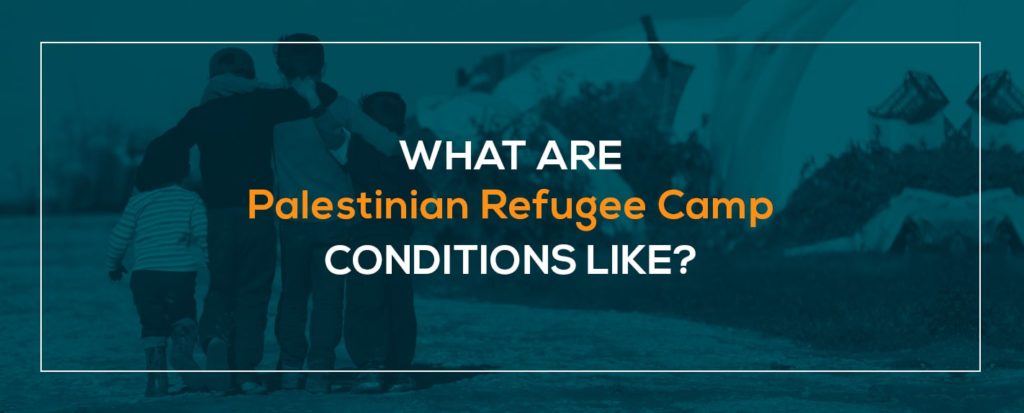

Refugee Camp Living Conditions | Medicine in Refugee Camps | Education in Refugee Camps | Refugee Unemployment
There are 58 official Palestinian refugee camps. They are located in Jordan, the West Bank, Gaza, Syria and Lebanon. Many of the camps were created in 1948 as a result of the first Arab-Israeli war. Other camps were added after the wars in 1967 and 1973 and more recently after the war in Syria for Syrian Palestinians. About 1.5 million Palestinian refugees live in the official camps.
Palestinian refugees do not have many of the same rights that other refugees have under the office of the United Nations High Commissioner for Refugees (UNHCR). That’s because Palestinian refugees are defined as “persons whose normal place of residence was Palestine during the period 1 June 1946 to 15 May 1948, and who lost both home and means of livelihood as a result of the 1948 conflict.”
The 1951 Convention for refugees was oriented towards people who had lost their homes and livelihoods because of World War II. That was changed by the 1967 Protocol, which did away with time limits and geographical boundaries. The creation of United Nations Relief and Works Agency for Palestine (UNRWA) in 1948 and the official definition of a Palestinian refugee were considered stopgap measures for a temporary problem. Thus far, however, no international or Palestinian authority has been able to make a change to these now 70-year-old definitions, even though the remedies created to help Palestinians refugees in 1948 can hardly be seen as a “stopgap” measure any longer.
Lebanon alone hosts 12 Palestinian refugee camps. There are 450,000 Palestinians registered in Lebanon with UNRWA, which operates the camps. These refugees lack many important rights. They cannot work in as many as 25 professions. As a result, there are more Palestinian refugees living in poverty in Lebanon than in any of the other areas where UNRWA works.
Living Conditions in Palestinian Refugee Camps
The housing conditions in Palestinian refugee camps is abysmal. Conditions are overcrowded, and the camps frequently lack basic infrastructures such as roads or sanitation. Often during times of crisis, the camps can go months without electricity and, when it is available, it is inconsistent. In some Lebanese camps, when the winter rains come, raw sewage washes into people’s homes.
Agreements between UNRWA and host countries fix the borders of these camps and residents can only build within those boundaries. As more people arrive or as the population increases by natural means, new houses can only be erected in already overcrowded spaces.
In Lebanon, Palestinian refugees are not allowed to repair or build property, even within camps. This means that if their homes are damaged in any way or if facilities like schools need repairs, it is illegal to fix them and those who try to do so face heavy fines. Technically, the refugees should be allowed to make the repairs because they can rebuild with UN support. Bureaucratic foul-ups, however, often prevent this from being a reality. When construction is allowed, confusion can still reign. In one case, Lebanese police showed up 30 times even though the refugees had received permission to make some repairs to a local school.
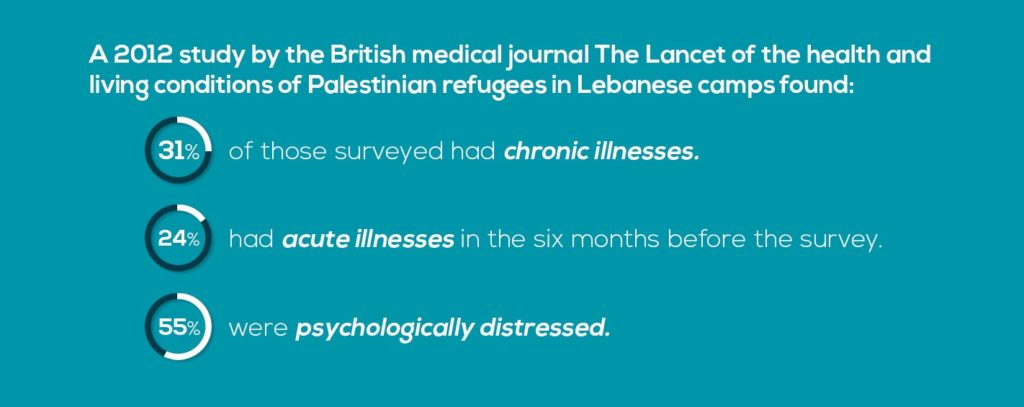

A 2012 study by the British medical journal The Lancet of the health and living conditions of Palestinian refugees in Lebanese camps found:
- 31 percent of those surveyed had chronic illnesses.
- 24 percent had acute illnesses in the six months before the survey.
- 55 percent were psychologically distressed.
The survey also found that residents with poor mental health were more likely to live in overcrowded homes with leaking roofs, had fewer assets and were more likely to suffer from chronic or acute illnesses.
Lack of Access to Medicine in Palestinian Refugee Camps
As The Lancet study above shows, Palestinian refugees face many health challenges because of the conditions caused by overcrowding and inadequate infrastructure, limited access to medicines and medications, lack of proper nutrition and poor hygiene accelerated by incidents such as the winter rains which bring sewage into people’s houses.
Malnutrition is an issue in all Palestinian refugee camps regardless of their location, but it is a particular problem in Gaza. Stunting, which involves hindering the normal progress or development of a child, has risen among the youth population from 8.2 percent in 1996 to 13.2 percent in 2017 in Gaza. In the West Bank, the rise has been from 6.7 percent to 7.9 percent. Access to food is a dangerous situation in Gaza, with 56 percent of the residents of Gaza classified as food insecure.
Gaza regularly faces serious deficiencies of medical supplies and medicines. Many times, medical disposables and essential medicines have less than a month supply. Some of the items affected include cancer medications, medications to treat immunological diseases and medical disposables such as gloves, bandages and needles that are used in intensive care, emergency departments and operating rooms.
International organizations and UNRWA provide some health care to all Palestinian refugee camps, regardless of where they are located. Many Palestinian refugees, however, must often seek health care that is not provided by aid organizations, which can be quite expensive depending on what local health care prices are. This means that Palestinian refugee families must regularly make difficult decisions about treatment. If more than one child is sick, this could mean that one gets treatment and one does not.
A study by the University of Beirut and UNRWA found that when a Palestinian family lives in extreme poverty, they are twice as likely to have a family member with some form of disability. These families are also much more likely to have a member with a chronic illness. It’s a terrible cycle. Poor housing and bad sanitation lead to sickness and ill health, which creates a financial drain on families, which plunges them even deeper into poverty, and the cycle repeats.
Lack of Adequate Education for Palestinian Refugees
Another serious problem in the Palestinian refugee camps is the lack of access to an adequate education. UNRWA provides educational resources for half a million children in the various Palestinian refugee camps, and international aid organizations like Anera offer additional resources. These resources, however, are frequently inadequate to the task at hand and do not always provide Palestinian youth with the skills that they will need to get jobs in the future.
The situation was made worse when the United States cut $300 million from UNRWA’s budget in 2018. Though the agency recovered all but $64 million from other donors, the reduction had an immediate impact on schools in the Palestinian refugee camps. The organization’s 711 refugee camp schools remained open in 2018, but the academic year of 2019-2020 is still uncertain.
In Gaza, schools are always overcrowded. More than two-thirds of Gaza schools run by both UNRWA and the Ministry of Education run on double shifts. This reduces the amount of time students can spend on core subjects and foundation learning. Along with overcrowded classrooms, there is not enough time to reinforce what the students are learning, support students with learning disabilities or offer extracurricular activities.
Another impediment to education both in Gaza and Lebanon is the continuing electrical outages. When electricity is not available for months or is restricted to only a few hours a day at other times, this affects students’ ability to concentrate on their studies.
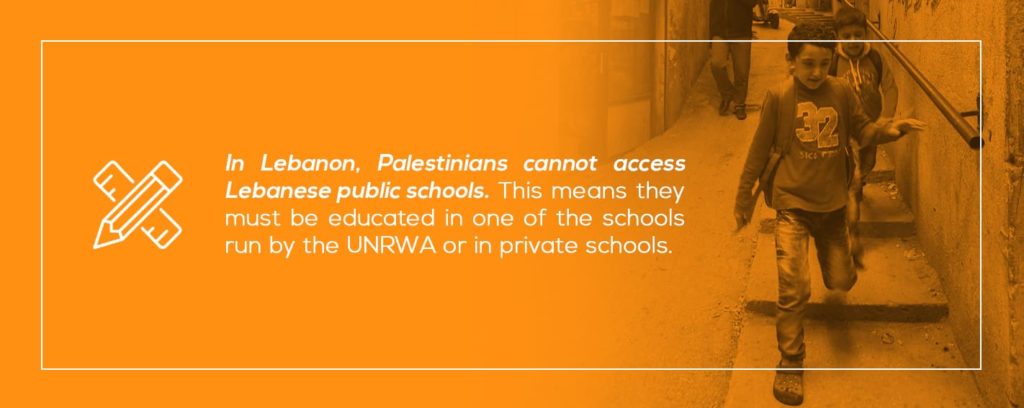

In Lebanon, Palestinians cannot access Lebanese public schools. This means they must be educated in one of the schools run by UNRWA or in private schools, which are beyond the financial means of almost all Palestinian refugees. Schools in the refugee camps are often dilapidated and severely overcrowded. As noted above, Palestinian refugees are not allowed to repair any buildings, including schools, so the structures can become quite run down.
Palestine’s overall dropout rate is almost 25% among children over the age of six, with the majority of dropouts being older than 18 years old. For refugees, the dropout number is a staggering 18%. Children who do graduate from secondary school do not usually seek higher education. While this is often because of the cost or because they feel that they will not be able to get a job afterward, many Palestinians fail the exams necessary to qualify for secondary education. Because it is difficult for Palestinians to access Lebanese public schools, dropout rates in Lebanon are higher than in Jordan (where the dropout rate was 2.17% for males, 2.09% for females in 2016), the West Bank (1.29% for males, 0.19% for females in 2016) or Gaza (1.75% for males and 0.35% for females in 2016) according to a report by UNRWA.
In fact, Palestinians who live in Palestine (Gaza and the West Bank) have one of the highest literacy rates in the world, 96.3%, according to the United Nations Development Program. We reported in 2014 that Palestine has a higher rate of pre-school enrollment than any other country in the Middle East. In Palestine, the issues according to the UNDP report are crumbling school infrastructure, a lack of trainer teachers and access to schools.
Several different factors come into play concerning the high dropout rate in Lebanon, including the lack of access, poverty, the need to support their family, substandard instruction, a lack of incentive since Palestinian refugees are not allowed to hold professional jobs in Lebanon and there are restrictions limiting their access to the labor market, and the curriculum. The curriculum is a particularly troublesome point of contention. The Lebanese government insists that UNRWA schools use state textbooks. The primary goal of these books is to promote Lebanese citizenship, which is denied to Palestinian refugees.
Palestinian Refugees Experience Staggering Rates of Joblessness, Especially in Lebanon
The unemployment rate among Palestinian refugees is staggering. In Lebanon, 56 percent of Palestinian refugees are unemployed. Most Palestinian refugees live on the equivalent of $6 a day. About 50 percent of the population only have minimal skills needed for a job. Another 10 percent have never attended school.
The situation is particularly bad for Palestinian refugees who have come from Syria. Palestinians from Syria drive up the unemployment rate among Palestinian refugees overall. While many of the Palestinian refugees in Lebanon have been living there for decades, Syrian refugees may have only been in the country for five or six years at most.
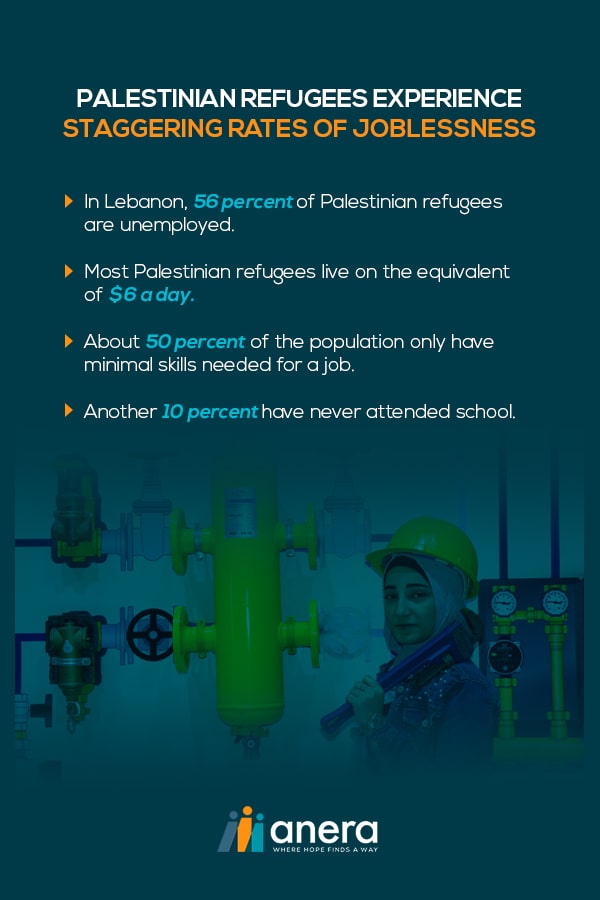

Around 38 percent of working-age Palestinian refugees in Lebanon are employed. Although nine in 10 Palestinian refugees in Lebanon were born in Lebanon, they are treated as foreign workers. As a result, expensive permits are required for them to work, which few employers want to pay. Health care benefits are not offered if they are employed. Palestinian refugees may not work in many different professions, including law, engineering and medicine. They cannot establish their own businesses outside the refugee camps and cannot work in any occupation that has a union, like driving a taxi.
A lack of education only compounds the inability to find a job for the many people who were born in Palestinian refugee camps in Lebanon. The competition for what jobs are available has become even tighter since the Syrian crisis led 2 million Syrian refugees to flee into Lebanon. The Syrian refugees, desperate to support their families, will often work for minimum wage or less “under the table.”
As a result, it is difficult for Palestinian refugees to find work other than menial labor for very poor wages in areas such as sanitation, agriculture, construction, textiles and carpets, car washing and electricity. Palestinian refugee women find work as nannies, nurses or servants.
The situation is not much better in other areas. The unemployment rate among the youth in Gaza is 60 percent. Cutbacks in funding have meant that organizations like UNRWA have been forced to lay off many Palestinian refugees who had found jobs with the group or drastically reduced their hours to part-time.
How You Can Help Palestinian Refugees
World Refugee Day is held every June 20 around the globe, but for Anera every day is about the struggles refugees go through to survive and live with dignity and hope.
Most of Anera’s programs in Lebanon and Palestine are based in Palestinian refugee camps and all of our staff come from the communities they serve, which helps us pinpoint the best areas for our resources to be used. Anera works with community-based organizations to develop long-term solutions to the most pressing problems.
Anera’s programs offer young people the chance to socialize and relax in safety by participating in sports programs that range from traditional folk dance classes to playing soccer. Your donation to Anera helps us build sports fields and renovate playgrounds, and it helps to train coaches in ways to deal with conflict management.
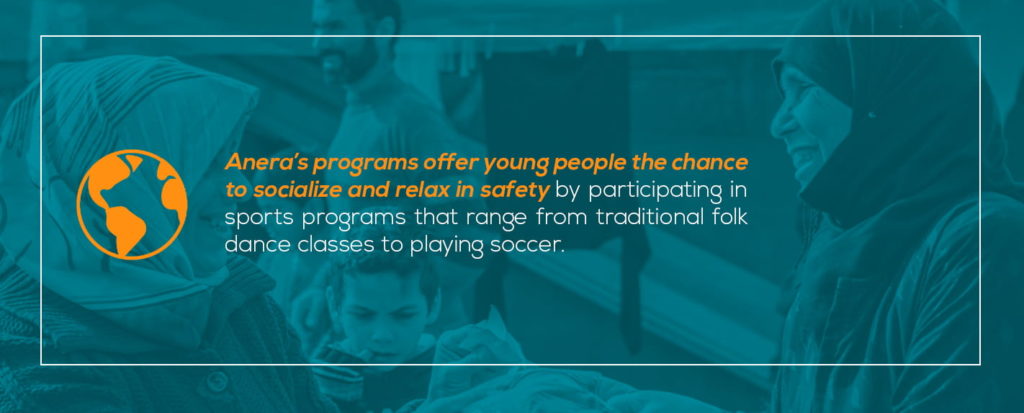

Anera works to promote education among young people and teach essential job skills. Using non-formal education, we teach math, literacy and computer basics. Anera offers classes to young people that teach useful job skills and helps to instill confidence. We also offer vocational training and scholarships that help students get jobs as preschool teachers, electricians, hairdressers, nurses or mechanics.
For many decades, Anera has also worked with community-based clinics across the West Bank, Gaza and Lebanon. We provide medicines and medical supplies, deliver antibiotics and medicines for chronic diseases, even provide hospital mattresses and hearing aids. We organize health days and public health campaigns to spread critical messages about personal hygiene, the importance of nutrition and the dangers of steroid abuse.
Together, with your support, we can make life a little easier for refugees. Please donate what you can to help Palestinian refugees live with dignity, well-being and hope.
OUR BLOG
Related
Joint Statement 200+ NGOs call for immediate action to end the deadly Israeli distribution scheme (including the so-called Gaza Humanitarian Foundation) in Gaza, revert to the existing UN-led coordination mechanisms, and lift the Israeli government’s blockade on aid and commercial…
